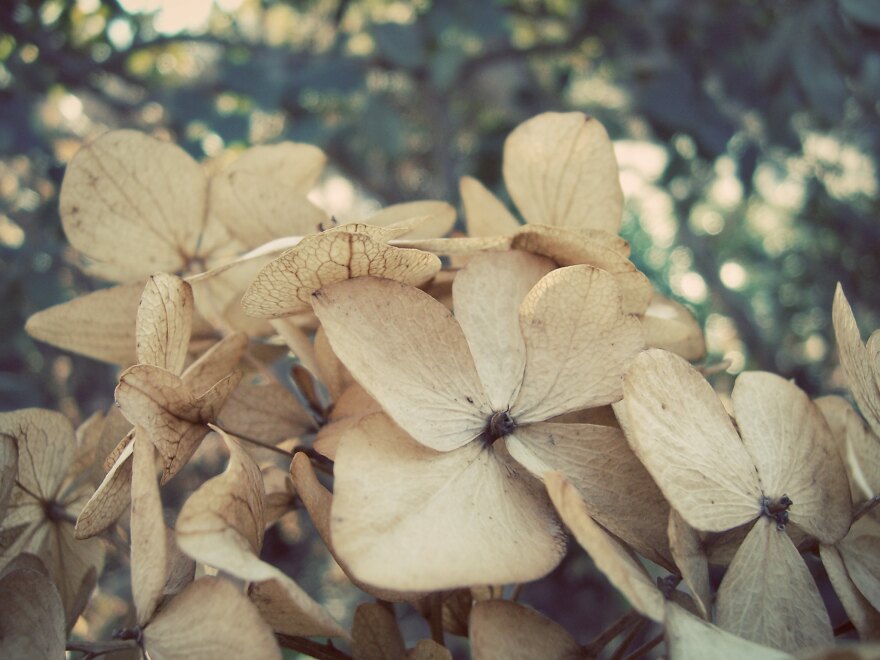Today I went close to what I had nearby, found seed heads everywhere, spent rose petals, rose hips I should have pruned, dried hydrangea blossoms covered in spiderwebs, Joe Pye bushy and dun like burdock, three blue spiderworts out of season, hops heavy across the euonymous, oodles of black redbud seeds like manes in the branches, the soft green seeds of the fierce wood nettle, new waterleaf leaves, mottled grape vines, red crab apples bigger than I'd ever noticed before, stiff and prickly burrs of purple coneflowers, the unusual brightness of honeysuckle berries in the late afternoon light.
All things around me seemed benign and soothing: a handful of soft, dark red raspberries from the patch that failed to produce much of anything this year, yellow jackets in two windfall apples, crabgrass gone to seed, its claws not threatening but protective, the summer mallow crumbling away, a silver-spotted skipper and a naked lady butterfly and a cabbage white ruffled by the breeze in the zinnias, the white fall crocus half drooped, the highest branches of the hackberry bare, honeybees climbing in the asters, a glimpse of a fleet hummingbird, a flash of its red chest, and the chirping and chirping of sparrows north of the garden, and the geese, in a ragged “V” flying overhead to the pond, calling in the dusk above the chanting crickets and katydids singing katydid-did-did.
This is Bill Felker with Poor Will’s Almanack. I’ll be back again next week with notes for the third week of early fall. In the meantime, everything is here in front of us to listen to, to see, to touch, everything we need.



